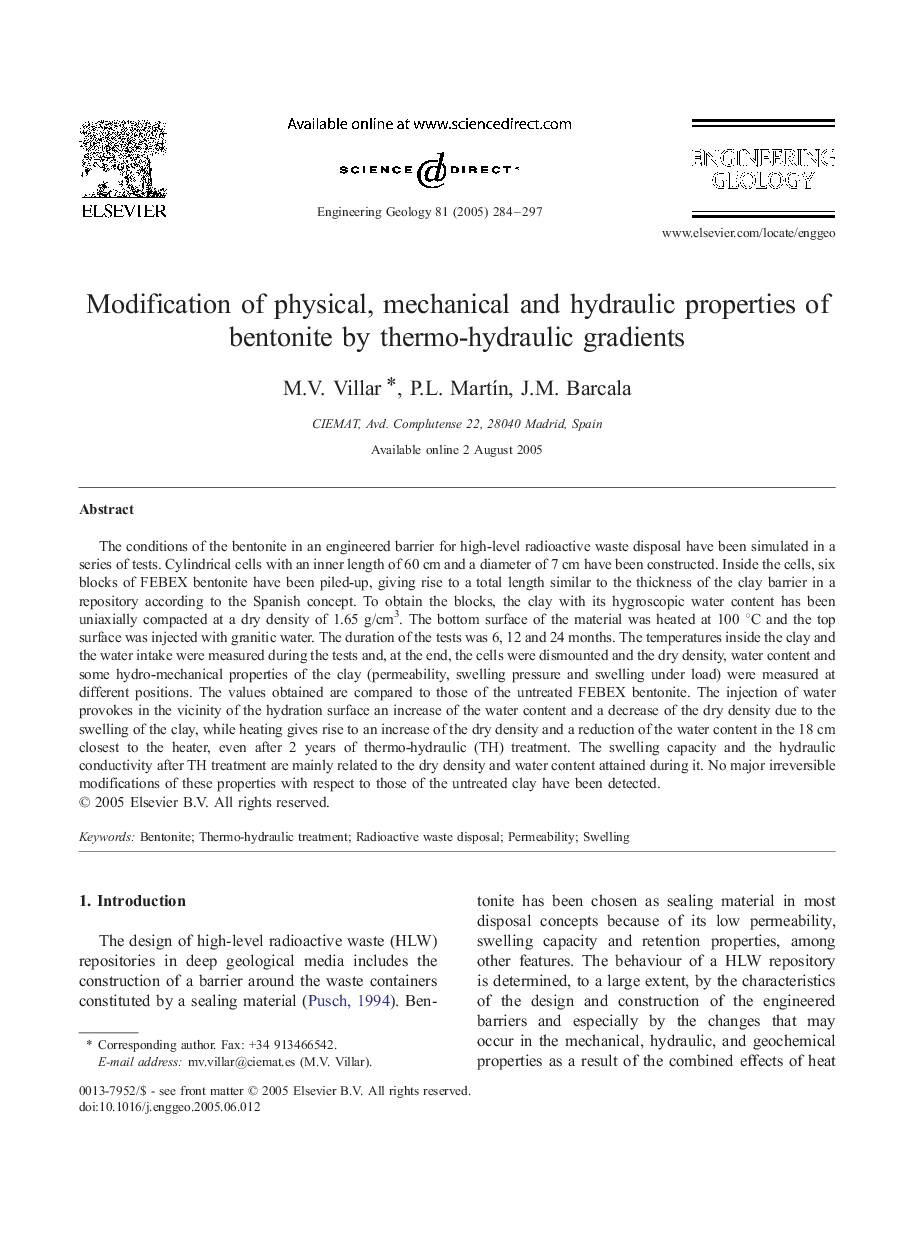| Article ID | Journal | Published Year | Pages | File Type |
|---|---|---|---|---|
| 9537778 | Engineering Geology | 2005 | 14 Pages |
Abstract
The conditions of the bentonite in an engineered barrier for high-level radioactive waste disposal have been simulated in a series of tests. Cylindrical cells with an inner length of 60 cm and a diameter of 7 cm have been constructed. Inside the cells, six blocks of FEBEX bentonite have been piled-up, giving rise to a total length similar to the thickness of the clay barrier in a repository according to the Spanish concept. To obtain the blocks, the clay with its hygroscopic water content has been uniaxially compacted at a dry density of 1.65 g/cm3. The bottom surface of the material was heated at 100 °C and the top surface was injected with granitic water. The duration of the tests was 6, 12 and 24 months. The temperatures inside the clay and the water intake were measured during the tests and, at the end, the cells were dismounted and the dry density, water content and some hydro-mechanical properties of the clay (permeability, swelling pressure and swelling under load) were measured at different positions. The values obtained are compared to those of the untreated FEBEX bentonite. The injection of water provokes in the vicinity of the hydration surface an increase of the water content and a decrease of the dry density due to the swelling of the clay, while heating gives rise to an increase of the dry density and a reduction of the water content in the 18 cm closest to the heater, even after 2 years of thermo-hydraulic (TH) treatment. The swelling capacity and the hydraulic conductivity after TH treatment are mainly related to the dry density and water content attained during it. No major irreversible modifications of these properties with respect to those of the untreated clay have been detected.
Related Topics
Physical Sciences and Engineering
Earth and Planetary Sciences
Geotechnical Engineering and Engineering Geology
Authors
M.V. Villar, P.L. MartÃn, J.M. Barcala,
